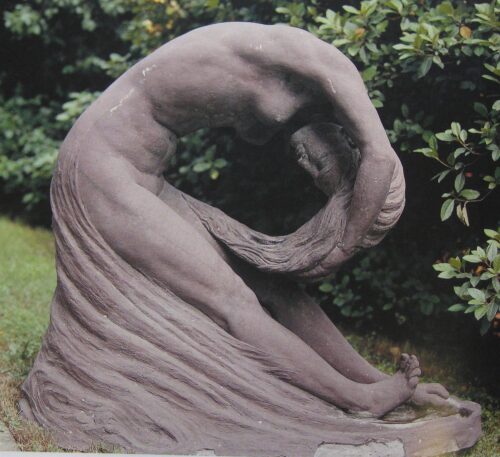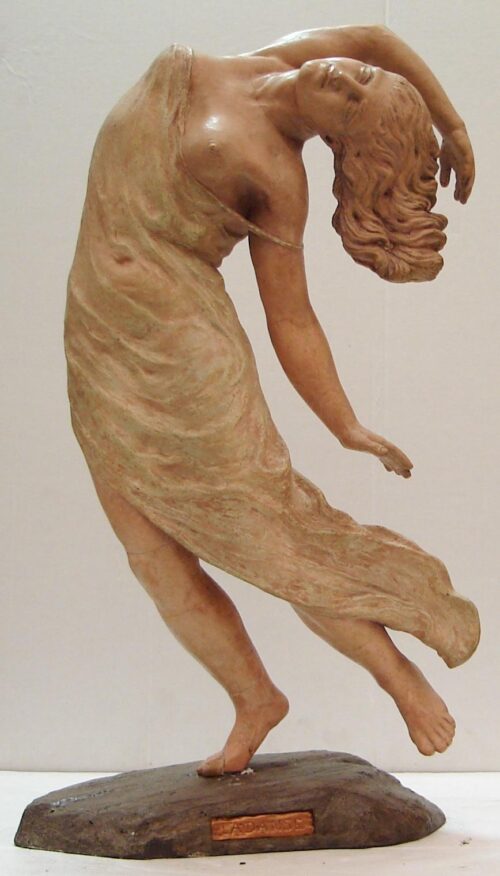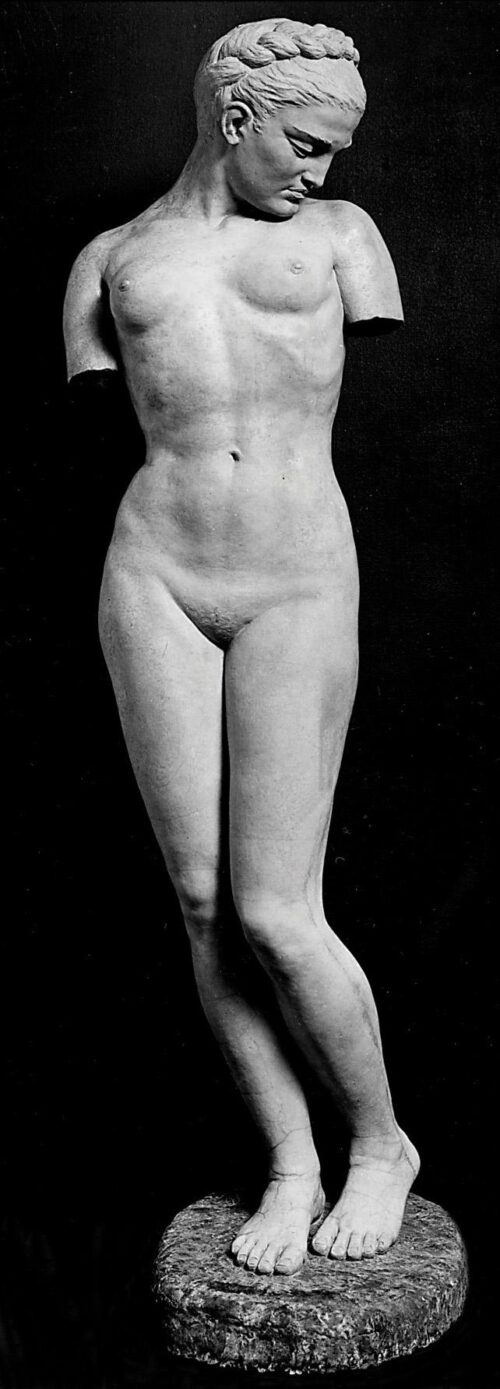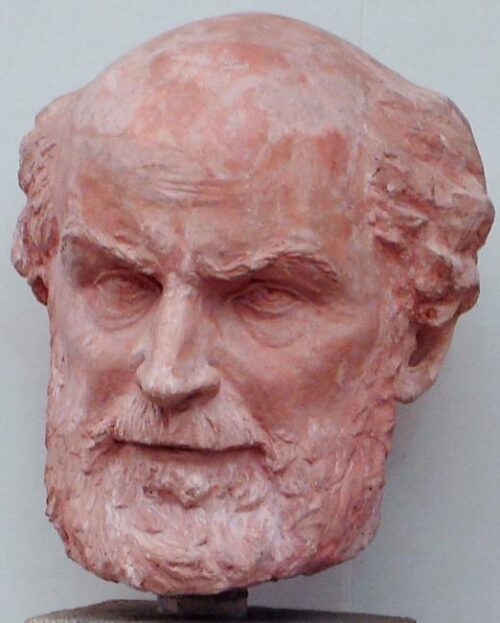
Kastriotis Georgios (1899 - 1969)
The Whirlpool of the Circle of Life, 1956
After his father’s death, Georgios Kastriotis and his family moved to Paris. Growing up in an environment in which everybody had artistic pursuits, his inclination for sculpture became apparent from a very early age, when he started modelling miniature figures in clay. In 1917, he enrolled in the Lausanne Engineering School but health reasons only permitted him to attend for two years. In 1926, he decided to study sculpture and within the year was admitted to the Academie de la Grande Chaumiere, in Antoine Bourdelle’s workshop. In 1928 though, pressed by his mother in spite of his teacher’s mediation, he returned to Athens. He worked as an art restorer at the National Archaeological Museum and the Acropolis Museum in 1935-1936. He resigned, however, from these positions in order to devote himself to sculpture. His full-time occupation with sculpture began in 1946, resulting in more than 80 sculptures in his life.
In 1958, his first solo exhibition was held at the Parnassos Hall. He also participated in group and Panhellenic exhibitions, and a posthumous retrospective of his oeuvre was held at the Municipality of Piraeus in 1972.
Focusing on the human figure, especially the female one, Kastriotis produced works of a pronounced monumental character with symbolic overtones. His works blend realistic and expressionistic elements, and Bourdelle’s influence – more evident in his earlier compositions – can be felt mostly in Kastriotis’s treatment of surfaces.

The Whirlpool of the Circle of Life, 1956

The Dance, 1953

Modesty, 1955

Antoine Bourdelle, 1932

We use cookies to make our site work properly, to personalize content and ads, to provide social media features and to analyze our traffic. We also share information about how you use our site with our social media, advertising and analytics partners. Read the Cookies Policy.
These cookies are necessary for the website to function and cannot be switched off in our systems. They are usually only set in response to actions made by you which amount to a request for services, such as setting your privacy preferences, logging in or filling in forms. You can set your browser to block or alert you about these cookies, but some parts of the site will not then work. These cookies do not store any personally identifiable information.
If you disable this cookie, we will not be able to save your preferences. This means that every time you visit this website you will need to enable or disable cookies again.
These cookies tell us about how you use the site and they help us to make it better. For example these cookies count the number of visitors to our website and see how visitors move around when they are using it. This helps us to improve the way our site works, for example, by ensuring that users find what they are looking for easily. Our website uses Google Analytics for statistics reporting.
Please enable Strictly Necessary Cookies first so that we can save your preferences!